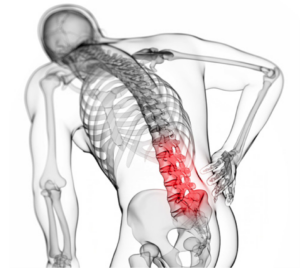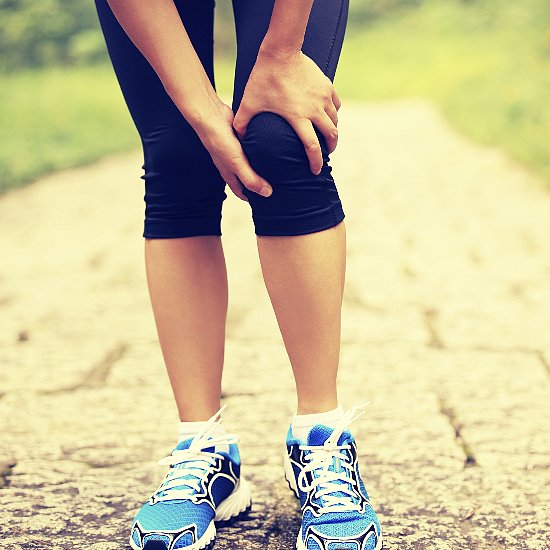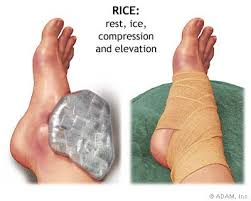HIIT weight training and those nagging injuries


If you’ve been exercising for a while, chances are that you’ve had to deal with some form of injury. It could be anything from a sprained ankle to stress fracture to nagging back or knee problems.
Minor injuries can be dealt with by resting and giving your body a chance to recover. These can happen whether you are exercising or not. Go to the playground any given weekend and I am sure there’ll be somebody there with some form of injury. Or how about the morning after bowling six games the night before. I know someone who threw their back out just from sneezing.
The point is that . . . . injuries can happen at any time and not necessarily when exercising. However because exercise injuries can be unique and a momentum stopper, it’s important to prevent them from happening in the first place. If you do get injured then it’s also necessary to treat the injury immediately and correctly.
What are causes of exercise injuries
Injuries come in many forms especially for those doing HIIT weight training. Some of the more common causes are:
- Accidents in the gym . . . . weights falling on toes or other body parts. This has happened to me on more than one occasion.
- Lifting weights that are too heavy
- Over training
- Dehydration
- Exercising in poor weather conditions – rain/ice
- Not using common sense
- Not using equipment correctly
- Not working with a partner on certain exercises
- Being chased by dogs in the park
That last one has happened to me on several occasions in the park.

Some common types of injuries include
- sprains
- strains
- stress fractures
- shin splints
- Achilles rupture ( this particular injury has caused me to miss a lot of cardio time)
- broken bones
- back/ knee/shoulder problems
How to prevent injuries
Preventing most injuries requires the use of common sense. For example if someone is lifting weights give them space unless they ask for assistance in which case use proper spotting techniques.
When starting an exercise program don’t lift more than you can handle. Lift weights that will allow you to do ten to twelve repetitions. I know some days you may feel stronger than normal but my advice is to stay within your range and gradually increase the weights.
Walk before you run. I am sure you have heard this cliche before. It is a good rule to follow when doing HIIT weight training or intense cardio exercise like plyos. Start slowly and build up your intensity, endurance and stamina over time.
Certain injuries can be very nagging – namely joint issues. Your shoulders, elbows, wrists and knees are joints to pay particular attention to when doing HIIT resistance. Normal daily activities such as walking, sitting and even lying in the prone position – can be painful to our joints if care is not used to protect them when exercising.
Protect yourself from injury
Depending on the type and severity of the injury keep this acronym in mind – P.R.I.C.E. Protect, Rest, Ice, Compress and Elevate.

This is basic to protecting yourself when you develop a minor soft tissue injury. For more serious injuries seek professional help as soon as possible.
Always seek out the assistance of a trainer or an experienced person to demonstrate the use of gym equipment. If exercising at home, be sure to use a training manual. A good place to start is by getting a copy of “How to Prevent Pre-diabetes“. There you will find a complete guide for training that not only helps those with diabetes or pre-diabetes condition but everyone who wants to improve their fitness level. It will take you from a beginner status to an experienced exerciser in no time.
If you are just starting an exercise program you may experience achy muscle after your first couple of sessions. This is not really considered an injury although it may feel like one. It’s referred to as delayed onset muscle soreness or DOMS. It can vary from mild to severe. It happens to all athlete and especially those who are returning after taking time off. This is treated by resting your body . . . . giving it enough time to recover, and getting the muscle use to doing work again.
Any serious injuries must be treated by a qualified medical personnel. Don’t take them lightly because if not treated properly they can lead to long-term problems, in addition to interrupting your workout goals.
Care must be taken to rest any injured body part by letting it heal completely. If you must exercise then be sure not to use the affected body part . . . . use an opposing muscle group. For example, if you injured your shoulder then exercise your legs on a bicycle or a leg machine. Or if you knee is out of sorts, then exercise your shoulders.
Because our goal is to make exercise a lifetime activity, pay attention to all injuries and take care to avoid them. It can be a momentum killer. I am a big advocate of using a partner when exercising especially when doing hiit weight training . . . . you can watch each other’s back.
Always be thankful and stay motivated.

